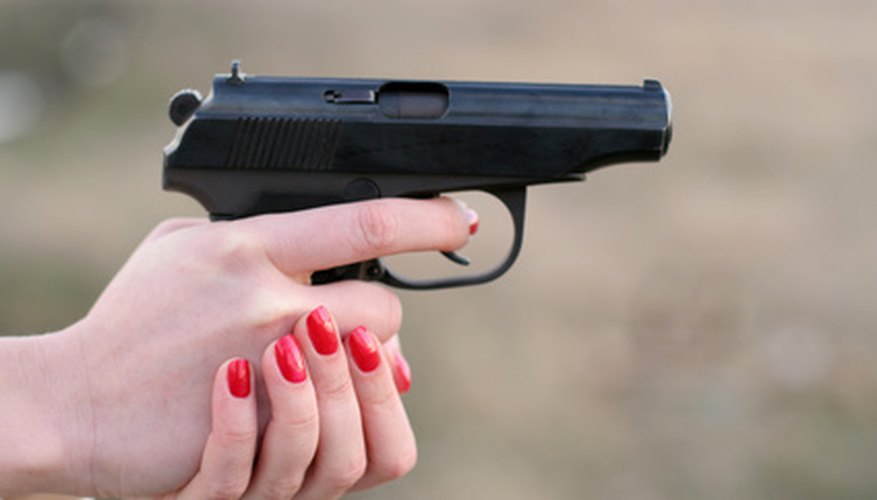
Gun bluing is a traditional finish applied to firearms. Bluing helps protect the steel from corrosion and gives the metal a very dark blue finish. The factory bluing process hasn't changed much over the years, and gun owners can also now buy home bluing kits to touch up or refinish their firearms. There are four basic types of gun bluing.
Hot Bluing
Hot bluing uses a heated alkaline solution. Potassium nitrate and sodium hydroxide are common ingredients in this process. The hot solution is applied to the steel parts of a gun, usually by dipping the parts into the solution. When completed, hot bluing provides a tough, attractive finish. This is the type of bluing you will find on factory-blued firearms.
Cold Bluing
Cold bluing is used for cosmetic touch-ups of previously blued firearms. You can find a myriad of cold bluing solutions at gun stores and online for touching up your blued guns. Cold-bluing solutions usually are sold in small bottles, and are applied with a brush-type applicator. Sometimes they are lightly heated after application, to increase their durability. Cold bluing is not nearly as effective as a protective coating as hot bluing, but for small cosmetic touch-ups, it is ideal.
Rust Bluing
Rust bluing is an older bluing process that is not used much anymore. It involves a process of causing a steel gun part to rust by applying an acid solution. After the part rusts, the acid is neutralized with boiling water and the rust is scrubbed off, leaving a blued finish. Many antique firearms were finished with this method, as hot bluing had not yet been invented.
Fire Bluing
Not to be confused with hot bluing, fire bluing is the process of heating a polished steel part until the surface of the metal changes color to a deep blue. It's not as durable as hot bluing, but like cold bluing, can be easily done at home. It produces a colorful and attractive finish, ideal for smaller gun parts or restorations. Fire bluing is sometimes referred to as "heat bluing," and as noted above, should not be confused with hot bluing.
References
- Gunsmiths.com: Heat Blue - An Experience
- "Gunsmithing at Home"; John E. Traister; 1996
Writer Bio
Phillip James has worked in the engineering and technology fields since 2002 and began writing in 2004. His work has appeared in his university newspaper, the "Avion," and he has done private technical manual work. He is pursuing a Bachelor of Science in aerospace engineering from Embry-Riddle Aeronautical University and his aviation airframe and powerplant mechanic certification from the Federal Aviation Administration.



